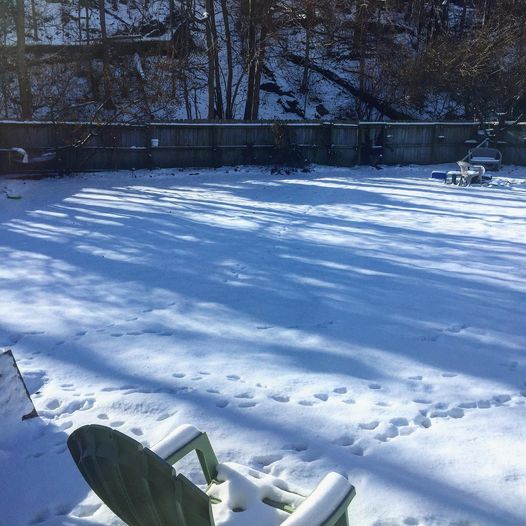7 Tips for Protecting Your Lawn this Winter
These tips for protecting your lawn this winter are critical. Winter is officially here, but that doesn’t mean you can forget about your lawn. Here in central Indiana, most of us, including me, tend to forget about our lawns when it turns to the season of cold and snow. We mow for the last time in late fall, rake up the leaves, and we might fertilize our yards. Then we treat it like it’s in hibernation. Although grass does protect itself from the environment by becoming dormant, there are still things you can do to protect your lawn and prepare it for spring.
7 Tips for Protecting Your Lawn this Winter
1. Fertilize before the first freeze
A slow-release fertilizer is one of the best ways to help your lawn over the winter. If you didn’t already fertilize, you can still do so when the snow has melted, and it’s above 40 degrees. Here is more of what you can do every fall to prep your lawn, 5 Fall Lawn Care Essentials for a Beautiful Spring Lawn
2. Mow low and slow
Your last mow of the fall doesn’t have to be your last mow of the year. If your grass is more than 3 inches tall, it’s dry, and the temperature is over 40, go ahead and mow.
3. Don’t put up your rake
Leaves don’t all fall from trees at the same time, and wet neglected leaves laying on your lawn can lead to damage from fungal growth, pest infiltration, and bare patches in the spring. Raking can stimulate growth by improving air circulation.
4. Don’t salt your lawn
Salt and ice melters sprinkled on the lawn will damage the root system. Be careful when applying ice melters to your drive and walks not to spread the salt on the edges of your property. If you have grass areas close to a salted road, it will help if you water the area to remove the salt and salt runoff when it’s 40 degrees or above.
5. Don’t pile on the snow
When you shovel the snow from your walks and driveway, don’t leave huge stacks of snow on your lawn. It’s best to spread out the snow rather than risk compacting the soil making it difficult for your grass to receive the nutrients it needs to be healthy.
6. Keep off the snow!
Avoid heavy traffic on your lawn when it’s covered with snow. Vehicles and heavy foot traffic can damage the grass beneath the snow. It’s easy to forget about the lawn under the snow and see only the snow-packed and scattered, but the grass below takes a hit as well.
7. Remove debris
Just like it’s essential to rake up leaves, it’s also important to pick up twigs, broken tree limbs, and trash blown onto your yard after a storm.
By following the 7 tips, you can help your lawn to a quick and lush start next spring. So, don’t forget about your lawn this winter.
How Can We Help You?
Berger Hargis has a company philosophy of providing personal excellence for all our services. Our growth and success have been due entirely to our commitment to honest, excellent customer service. We’ve built the business on the referrals we have received due to this philosophy.
If we can answer any questions, please don’t hesitate to Contact Us.
Photo by Larry Tseng on Unsplash
Go Back








